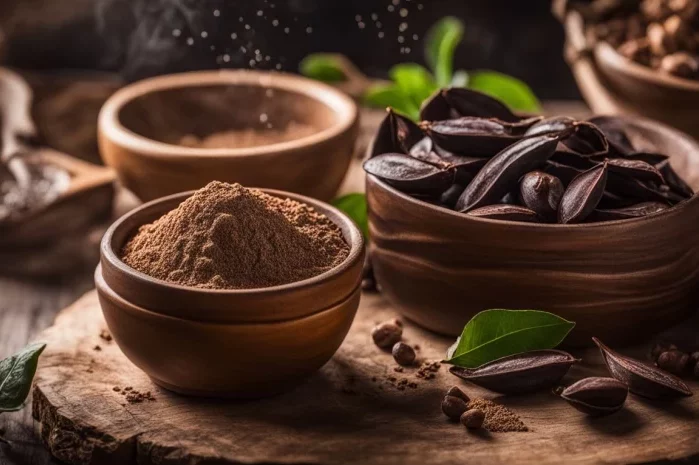Christmas, a holiday celebrated by billions around the world, is a time of joy, togetherness, and cherished customs. While the core essence of Christmas – the spirit of giving, the joy of family, and the celebration of love – remains constant, the way it’s celebrated varies greatly across different cultures and regions. From the snowy landscapes of Europe to the sunny beaches of the Southern Hemisphere, Christmas traditions paint a vivid picture of global diversity and cultural richness. Let’s embark on a journey around the world to explore some of the most fascinating and lesser-known Christmas traditions, highlighting the tapestry of cultures that make up our global celebration.
Europe: A Cradle of Christmas Traditions
Europe, with its rich history and diverse cultures, is home to some of the most iconic Christmas traditions.
1. Germany: Christkind and Advent Calendars
In Germany, the Christkind, a messenger of the Christ Child, brings gifts to children on Christmas Eve. Advent calendars, with little doors or pockets counting down the days until Christmas, are a cherished tradition that originated in Germany in the 19th century.
2. Italy: La Befana
In Italy, La Befana, an old woman resembling a witch, delivers gifts to children on Epiphany Eve, January 5th. According to legend, she refused to help the Wise Men find the Baby Jesus and now roams the world searching for him, leaving gifts for children in her wake.
3. Sweden: St. Lucia’s Day
St. Lucia’s Day, celebrated on December 13th in Sweden, honors St. Lucia, the patron saint of light. Young girls dress in white robes with red sashes and wear wreaths of candles on their heads, symbolizing light in the darkness of winter.
Asia: Blending Ancient Traditions with Christmas
In Asia, where Christianity is a minority religion in many countries, Christmas is often celebrated with a unique blend of local customs and Christian traditions.
1. Japan: KFC Christmas
In Japan, Christmas isn’t a national holiday, but it’s widely celebrated. One of the most peculiar traditions is enjoying a Christmas feast from Kentucky Fried Chicken (KFC). Thanks to a successful marketing campaign in the 1970s, KFC became synonymous with Christmas in Japan, and ordering KFC for Christmas dinner is now a popular tradition.
2. Philippines: Simbang Gabi
In the Philippines, Simbang Gabi, or Night Mass, is a nine-day series of dawn masses leading up to Christmas Eve. It’s a deeply religious tradition that originated during Spanish colonial rule and is followed by festive gatherings and feasting.
3. India: Christmas in Goa
In the Indian state of Goa, which has a significant Christian population, Christmas is celebrated with great fervor. Homes and churches are adorned with lights and decorations, and Christmas cribs depicting the Nativity scene are a common sight. Traditional Goan sweets like neureos and dodol are prepared for Christmas feasts.
Africa: Vibrant Celebrations Amidst Diverse Cultures
Across the vast and diverse continent of Africa, Christmas is celebrated in a myriad of ways, reflecting the unique cultural tapestry of each region.
1. Ethiopia: Ganna
In Ethiopia, where the majority of Christians belong to the Ethiopian Orthodox Church, Christmas is called Ganna and is celebrated on January 7th. It begins with a day of fasting, followed by a colorful and joyous celebration featuring traditional music, dance, and feasting.
2. South Africa: Braai Day
In South Africa, where Christmas falls during the summer months, many people celebrate with a braai, or barbecue, on Christmas Day. Families and friends gather outdoors to grill meats, enjoy traditional side dishes, and spend time together in the warm sunshine.
3. Nigeria: Carnival of Calabar
In Nigeria, the Carnival of Calabar, held annually in December, is one of the largest street festivals in Africa and includes colorful parades, music, dance, and cultural displays. While not explicitly tied to Christmas, the carnival’s timing often coincides with the holiday season, adding to the festive atmosphere.
The Americas: From North to South, a Tapestry of Traditions
In the Americas, Christmas traditions vary widely, influenced by the continent’s diverse mix of indigenous cultures, European colonization, and modern influences.
1. Mexico: Las Posadas
In Mexico, Las Posadas, a nine-day celebration leading up to Christmas Eve, reenacts Mary and Joseph’s journey to Bethlehem. Each night, a procession of people goes from house to house, singing and asking for shelter, until they reach a designated home where they are welcomed with food, drink, and festive piñatas.
2. Canada: The Christmas Tree
In Canada, the tradition of decorating Christmas trees can be traced back to German immigrants who brought the custom with them in the 18th century. Today, Christmas trees are a central part of holiday decorations in Canadian homes and communities, often adorned with lights, ornaments, and tinsel.
3. Brazil: Reveillon
In Brazil, where Christmas falls during the summer months, many people celebrate Reveillon, the New Year’s Eve festivities that often extend into Christmas celebrations. It’s a time for beach parties, fireworks, and elaborate feasts featuring traditional Brazilian dishes.
Oceania: Christmas Down Under
In the Southern Hemisphere, where Christmas coincides with summer, traditions take on a distinctly different flavor.
1. Australia: Carols by Candlelight
In Australia, Carols by Candlelight is a popular Christmas Eve tradition where communities gather in parks or public spaces to sing Christmas carols by candlelight. It’s a beloved tradition that brings people together to celebrate the holiday spirit under the stars.
2. New Zealand: Pohutukawa Tree
In New Zealand, the pohutukawa tree, with its vibrant crimson flowers, is often called the New Zealand Christmas tree. Its blooming in December coincides with the holiday season, and its bright red blossoms are a symbol of Christmas in the country.
Conclusion
From the snow-covered streets of Europe to the sun-drenched beaches of Oceania, Christmas is celebrated in countless ways around the world. While traditions may vary from one culture to another, the underlying spirit of Christmas – of love, joy, and togetherness – remains universal. As we embrace the diversity of Christmas traditions, we also celebrate the common threads that unite us all in the spirit of the season. Whether it’s exchanging gifts, sharing meals with loved ones, or singing carols under the stars, Christmas reminds us of our shared humanity and the power of traditions to connect us across continents and cultures.


























